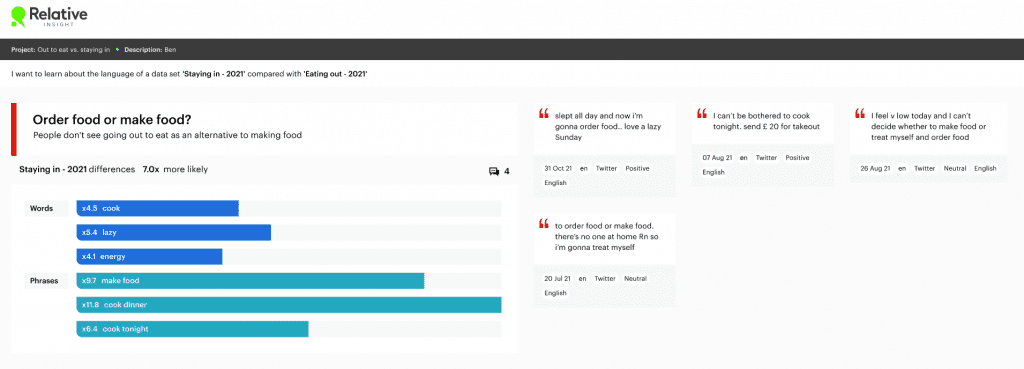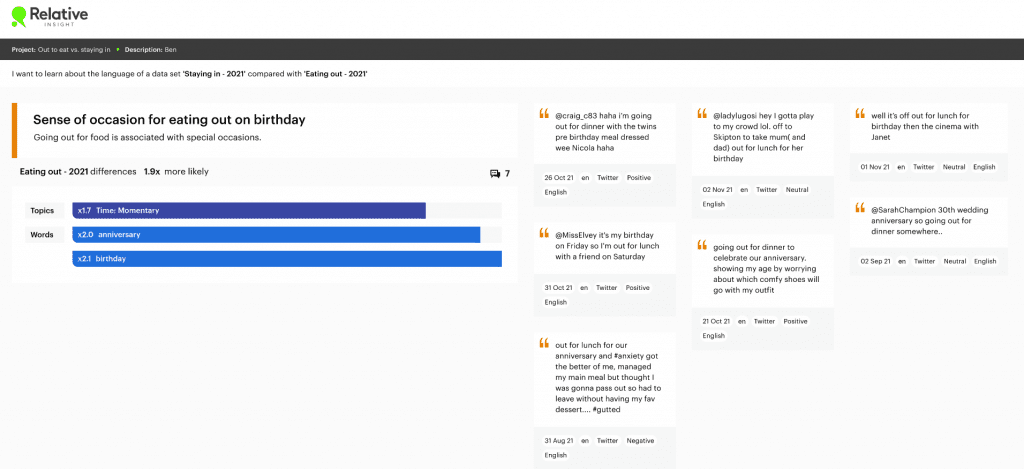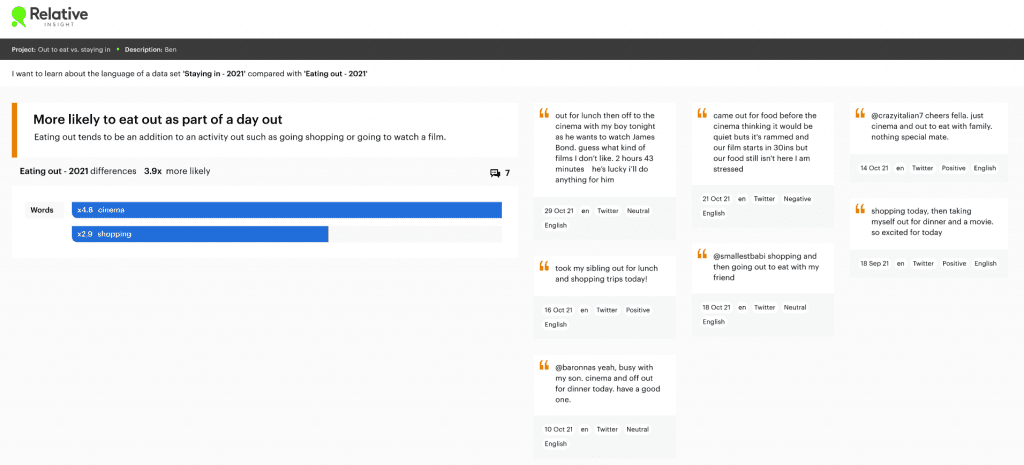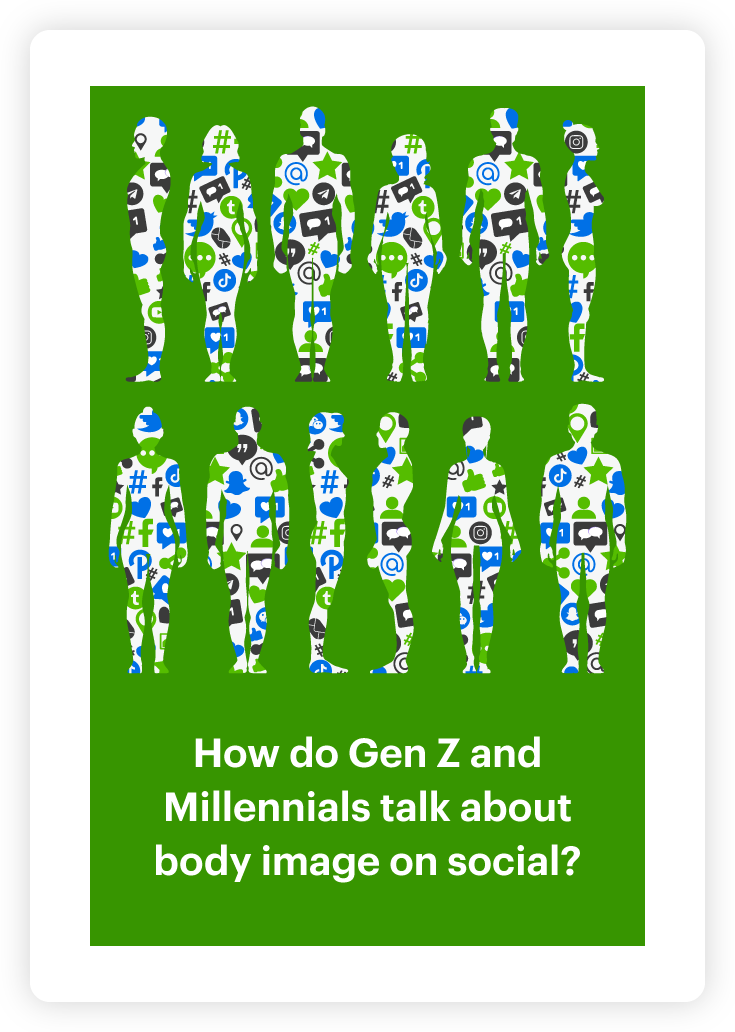Using social data to decode the decision behind getting takeout vs. going out for dinner

By Ben Bateman, Commercial Associate
I’ve always had a soft spot for chain restaurants where the menus are familiar and the products predictable. During lockdown, when the opportunity to eat out was taken away, restaurant takeout became more readily available from a range of sources.
Now that that the decision about where to eat your favorite food is back on the table, the question is will that table be in a restaurant, or in your own home?
Relative Insight’s text analytics platform provides insights into the motivations that lie behind consumer decision-making processes so I decided to put it to the test by taking relevant social data and uploading it into the platform for analysis. In order to do this, I looked at tweets and conversations over the course of 2021 that refer to eating out and compared the content of them to tweets talking about getting a takeaway.
Getting takeout vs. going out for dinner
For a majority of people going out to eat is not a viable alternative to cooking at home, but getting a regular takeout somehow is deemed an acceptable alternative.
Most of us are likely to have the facilities to produce a meal in our own home, so what we’re lacking is more often the motivation to cook, or ingredients to put together. Our analysis of online conversations reveals that people talk 7x more often about opting for a takeout as an alternative to making food.


The insights reveal a degree of guilt associated with having takeout and it is often perceived as the lazy option. Some people try to alleviate this guilt by convincing themselves they deserved it as a reward or treat for something they have achieved – whether that’s surviving a busy week at work, or celebrating payday.
Whether that treat is deserved or undeserved, the cost of takeout is likely to exceed the cost of cooking for oneself. The conversation around money indicates that people are 2.6x more likely to mention the expenditure on a takeaway, as they ultimately believe their hard-earned cash should not be spent in this way.


Interestingly, people indicate that they are often overwhelmed by the range of takeout options available that can be bought in or delivered to their homes, whereas visiting a restaurant narrows those decision-making options right down. Insights reveal that the most spoken-about takeaway is Chinese food, followed by a good old Indian curry.


When it comes to talking about going out for dinner, the general consensus switches and it’s regarded as more of a social activity rather than a guilty pleasure.
Eating out
Eating out for a special occasion is quite a predictable insight, with birthdays and anniversaries being cited as the main reason for doing so. People are excited about the chance to dress up again – something deemed totally unnecessary during lockdown, and a waste of time if you’re just eating a pizza on the sofa at home.


Conversations about going out for dinner are also peppered with phrases related to quality time spent with family or good friends, and I saw references to friends and family occurring 2.6x more in this data set.


Having made the decision to splash out on a restaurant experience, people are 3.9 x more likely to combine this with an additional treat, such as a trip to the cinema (4.8 x more) or as part of a shopping trip (2.8 x more).


Relative Insight enables brands to better understand the voice of consumer so that they can adapt their product or service to effectively meet the standards of their target market. Success is measured by being able to spot the disparity between the service you believe you provide, and the service your customers believe they receive. The smaller the gap, the more customer satisfaction you’ll see.
Please get in touch, if you would like to know more!
Bon Appetit!
